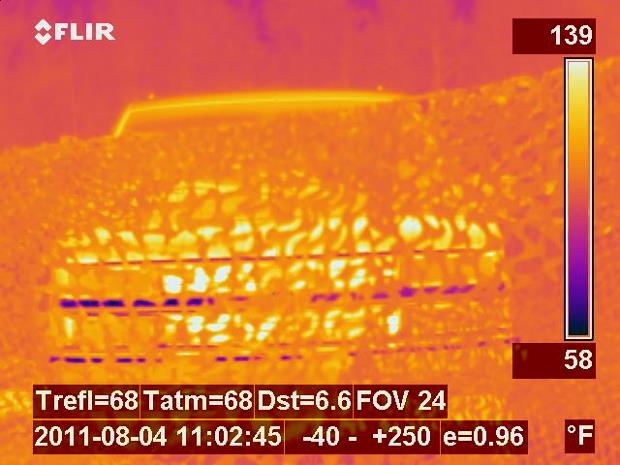Brass Fetcher Ballistic Testing
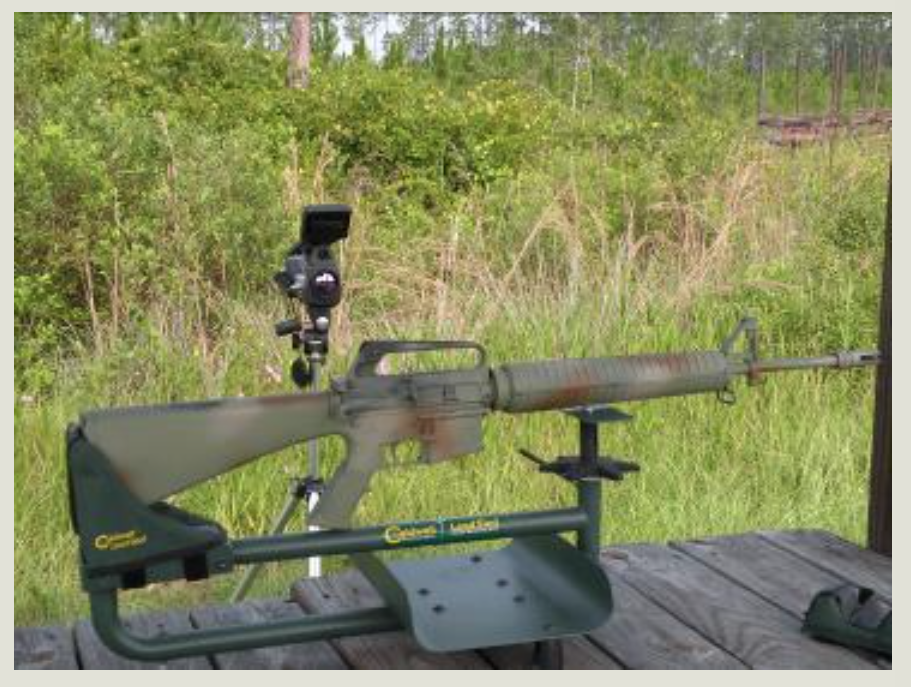
Thermal cameras form images based on the emitted infrared radiation detected from an object. All objects warmer than absolute zero emit infrared radiation, with most of the spectrum easily detectable by todays thermal imagers. Absolute zero is –460 degrees Fahrenheit so this is to say that everything is detectable by thermal imagers as long as there is a difference in temperature between the object and its environment.
This technology is very useful for peaceful engineering and science pursuits, but it unsurprisingly finds its origins (and greatest use) as a military tool. In this role, thermal imaging is employed in the guidance of heat-seeking missiles, observation scopes and most recently as a scope mounted on individual weapons. It is well known that technology gets cheaper, smaller and faster through time. That one of the leading thermal imager manufacturers has announced a smart phone case with integrated infrared imager (MSRP $350) is testimony to this fact.
When one uses the term ‘thermal’ they are typically referring to the Mid Infrared region (longer wavelength than night vision, but shorter wavelength than the Far Infrared region) of the electromagnetic spectrum. The small segment of the EM spectrum that is visible to the human eye in comparison to the large portion of the EM spectrum that is unknowable to us without the assistance of machines, should give slight pause to the reader. Different rules of camouflage, concealment and decoying applied depends on the different portion of the spectrum that is being considered. Excellent visual camouflage will do nothing to prevent detection of the wearer if the near-infrared (NIR) reflectivity of the camouflage is not similar to their immediate surroundings (green night vision.) Just the same, if one is using proper camouflage discipline and wearing NIR-reflective clothing (typical now in the uniforms of many military forces), they will be detected by a thermal imager (which operates in the Middle Infrared, MIR region) if there is a temperature contrast between the surface of their body and the surface of their immediate surroundings. While camouflaging yourself against visual and NIR detection is critical, management of ones thermal signature is vital if your opponents are using thermal infrared detectors.
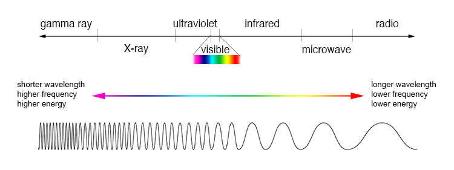 Figure 1 (courtesy: NASA)
Figure 1 (courtesy: NASA)Figure 1 is a diagrammatic representation of the electromagnetic spectrum. Ultraviolet light is mostly a concern in snow-covered areas but your vulnerability can be adequately determined by applying a blacklight to your uniform and material from your environment. Above the visible spectrum is the near infrared spectrum where green night vision operates. Moving further is infrared, where thermal imagers operate.
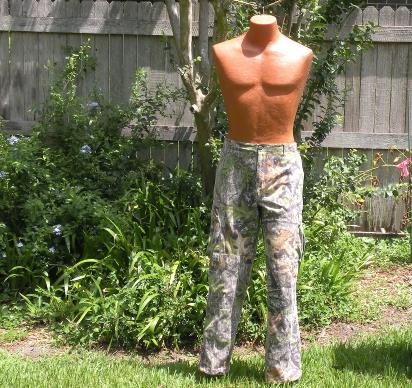
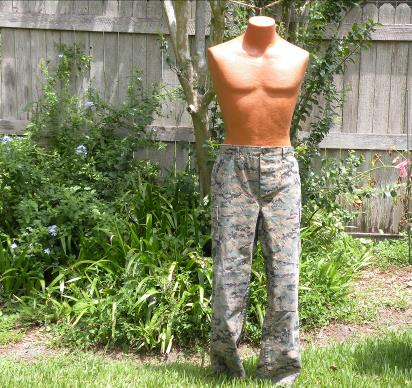
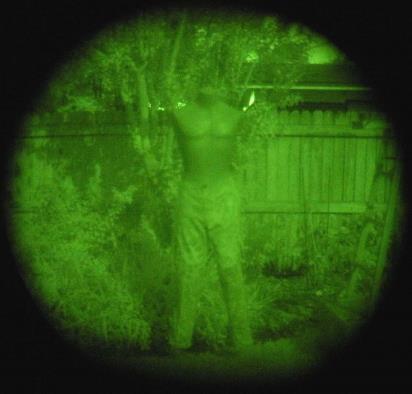
Good NIR match with surroundings. (Mossy Oak Obsession)
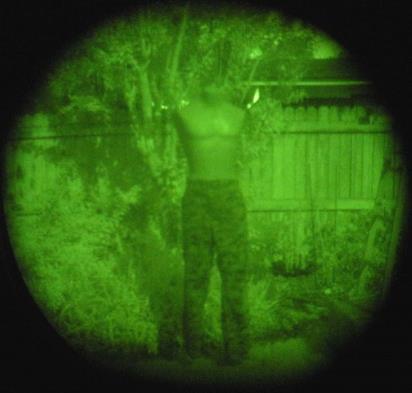
High Near Infrared Contrast. (TRU-SPEC MarPat)
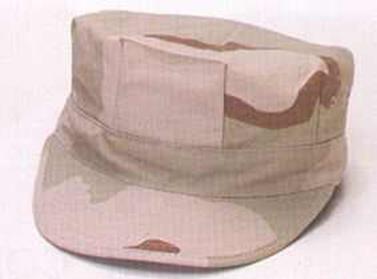
Desert Patrol Cap

Obvious Target.
(T-shirt, 3-color Desert Patrol Cap)
The green images on the left and in the center above were taken through a Third Generation night vision device (62 lp/mm resolution.) Color does not exist in the near infrared region—but like the visible spectrum there are different wavelengths and intensities and the reflection of the full moon light off of the fabric is what forms the image in the night vision device. Some fabrics are well matched to the environment and some fabrics are noticeably with night vision because they are either too dark or too light for the environment. Thermal imaging (pictured at right) is the greatest threat imaging system on the modern battlefield. A quick examination of the sample image above should make this obvious.
This thermograph was taken at noon on an August day where the ambient temperature was 93 degrees Fahrenheit. Having warmed in the sun all day, the concrete wall behind me contrasted nicely with my skin temperature of 90 degrees Fahrenheit. Note that this is only a 3 degree difference and that the image quality of the imager used could be considered to represent the military state-of-the-art … in the late-1960s. One of your goals in avoiding infrared imagers is to make the temperature of you and your equipment as close to that of the background as possible. Since different materials cool and warm at different rates and since it would be painstaking to measure the temperature of the environment you are contemplating walking through, thermal imaging is a very difficult enemy to trick. Not to mention the fact that the background is not homogenously warm and that you would need your own thermal imager with which to view your surroundings.
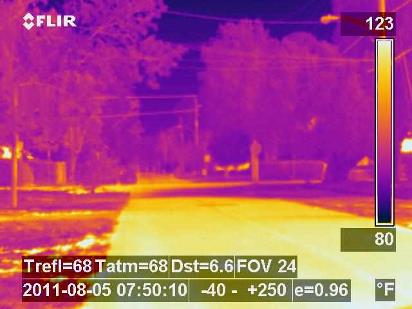
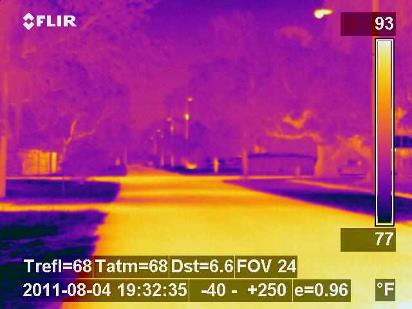
The thermograph on the left shows a typical suburban neighborhood at 11am. The thermograph on the right shows the same neighborhood at 11pm. One positive effect of sunlight is that it creates hot spots which come close(r) to the temperature of your skin. Thermal imagers are most effective at night though they have the capability to see through most types of smoke and are not badly effected by rain. Note the concrete and brick structures are still in the 88-93 degree F range even 3 hours after sun down.
The human visual-brain system is a curious thing. Our attention is instinctively drawn to objects with straight lines and as well as motion. Objects that contrast with the background also garner our attention. We discussed earlier how our goal is to reduce our contrast with the background. This is not always practical or possible. One technique is to take a heavy insulating material (for example: sweater, jacket, bullet-resistant vest) and leave it in the sun or in the shade (depending on whether you are planning on crossing a hot area or a cold area) for a few minutes. Put this clothing on and move across your area using terrain features to further conceal your movement. Depending on the insulating value of the clothing, how long you let it condition and the intensity of the sun, that part of your body should be able to appear near the environmental temperature for a few minutes.
One important aspect to note about thermal imagers is that they are still expensive and have a narrow viewing angle. This means that, if an imager is operating in your area, that it will be looking at key terrain features and likely lines of drift like roads, paths and rivers. Make yourself uninteresting to look at.
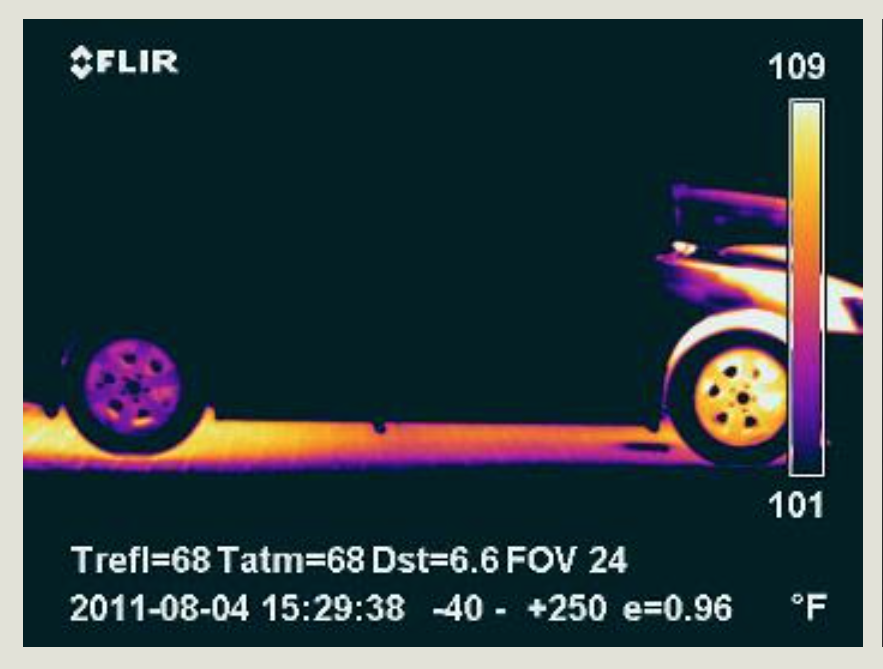

To the left is an example of heat distribution through the metallic structures of a warm car. Notice the thermal gradient on the car hood, the ground cooling from the shade of the car and the pool of water on the ground.
To the right is Winston, the Bassett Hound. If you read my story elsewhere about the time my dog woke me up when the ‘hood was about to pay me a visit, this is the dog. Here, he is modeling the effects of insulation (fur) on thermal imagery.
The fur on Winstons back is thinner towards the tail and thicker towards his neck. His body should be roughly the same temperature in both locations but it is obvious, when compared with his face, that the insulating effect reduces the temperature difference of the surface of the object with the external environment.
Let’s take a look at how reducing the rate of heat transfer effects us in common situations:

Me with a thin synthetic shirt.

Me with a NIJ II-A Spectra-Shield bullet resistant vest under thin synthetic shirt.

Me with a tactical overvest (NIJ III-A) Kevlar and a HDPE rifle plate inserted in the pocket.
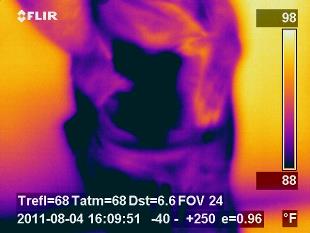
Glock 36 concealed under thin synthetic shirt. Shirt pulled tight over weapon.
Earlier we mentioned the value of making yourself look uninteresting. One of the best ways to do that is through terrain obscuration. You are going to want to have camouflage nets when you have a big structure or vehicle that you need to hide in semi-open or open terrain. Among the highest quality net I have ever seen is the US military LCSS camouflage net. It will literally last for years outside with only minor repair.
The net remains near the temperature of the environment while the temperature of the radiator is closer to 130 degrees Fahrenheit. You are not hiding the object—you are suppressing discovery of the concealed object by the human eye and are breaking missile lock in the case of shapes that are recognizable by advanced targeting computers.
Speaking of easily recognizable shapes: firearms, especially ones that have been shot recently, are beacons to thermal imagers. Let’s look at the two below examples of an AR-15 that has fired 10 M193 rounds in rapid succession and also a 45 ACP UZI with Advanced Armament sound suppressor after 15 rounds.
Another element of the genius of Eugene Stoner and his design for the AR series of rifles is apparent once you remove the heat shields from the barrel of an AR-15. Given that the M16 was designed for light weight and limited fully-automatic fire, barrel cooling is an important topic. If a barrel gets too hot then accuracy suffers and wear on the rifling and locking system increases. A person must be conscious at all times of their visual and reasonably, infrared signature. Hot barrels are inviting targets to thermal imagers. Thermal imagers are often attached to heavy machineguns and grenade launchers. The vertical holes on the M16 heat shield accelerate barrel cooling due to the chimney effect while the aluminum heat shields reflect the heat from the barrel away from the surface of the heat shields—keeping your hands cooler and yourself less vulnerable to some potentially very bad medicine.
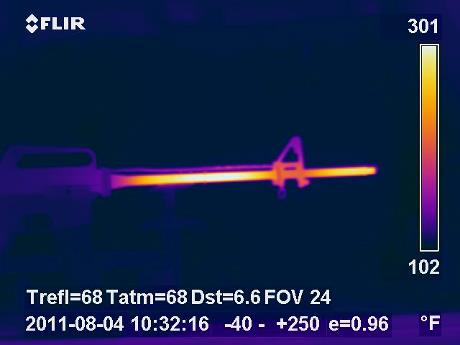
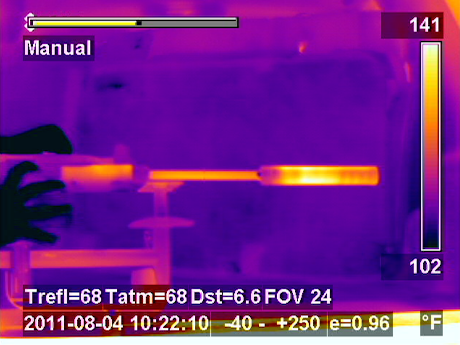
At left is an IMI UZI in 45 ACP. Attached to the barrel is an Advanced Armament Ti-Rant .45 sound suppressor. 15 shots have been shot through this weapon at the moment the thermograph was taken. Notice the heat distribution in the baffels of the sound suppressor and also in the chamber area. With an infrared imager of the appropriately-high resolution and frame rate, it should be possible to increase the thermal performance of firearms by determining the appropriate material, shape and geometry for optimum cooling and weight reduction.

I’ll leave you with a few breaths of relief after scaring you with the capabilities of thermal imagers. One is that IR cannot ‘see’ through anything. The only way it can image through walls is if something hot is left against the wall for a very long time. Then it will only be able to form an image of the hot spot caused on the surface of the wall .. .it won’t be an ‘image’ of the object that caused the hot spot.
IR cannot see through water (at left) and cannot see through conventional glass windows. Smoke that is laden with warm, dense particles like metallic flakes are both hazardous to your health and work well to screen objects from the view of infrared imagers.


